Table of Contents
Creating a culture of accountability is paramount for organizations seeking success and growth.
However, 8 out of 10 leaders don’t define what their people should be working on, and an equal number of people don’t have a clear understanding of the roles assigned to them.
It gives rise to poor accountability, and that further adds to the following problems at the workplace:
- Low productivity
- Lack of trust
- Missed deadlines
- Increased errors and mistakes
- Limited growth and innovation
By instilling a sense of ownership, responsibility, and transparency, you can cultivate a workplace culture where accountability thrives, leading to:
- Improved performance
- Better collaboration
- Organizational effectiveness
Did you know?
80% of people see accountability as punishing
Source: Anne Loehr
This blog will delve into practical strategies and approaches to foster accountability at every level, from individual employees to the broader organizational structure.
Let’s dive in-
Creating a Foundation for Accountability
Building a culture of accountability is important for organizations to thrive.
In this section, we will explore key elements that lay the groundwork for accountability.
-
Leadership’s Role in Promoting Accountability
Leadership plays a crucial role in promoting accountability within an organization.
By demonstrating accountability themselves, leaders set an example for others to follow.
They can foster a culture of accountability by clearly communicating expectations, providing support and resources, and making themselves and others accountable for their actions and outcomes.
-
Setting Clear Expectations and Goals
Setting clear expectations and goals is essential to create a foundation for accountability.
It involves the following key aspects:
- Clearly defining responsibilities
- Outlining performance standards
- Ensuring employees understand what is expected
By providing clarity, employees understand their roles and can take ownership of their tasks and deliverables.
-
Establishing a Framework for Accountability
Organizations need to establish a framework that supports accountability. It includes:
- Developing processes and systems for tracking progress
- Monitoring performance
- Providing feedback
- Implementing regular check-ins
- Performance evaluations
- Performance metrics
This will help you create a structured approach to accountability.
Additionally, establishing consequences for unaccountable behavior and recognizing and rewarding accountable behavior reinforces the importance of accountability throughout the organization.
Pyramid For Creating A Culture Of Accountability
Read the infographics to know about the four-level pyramid for creating a culture of accountability:
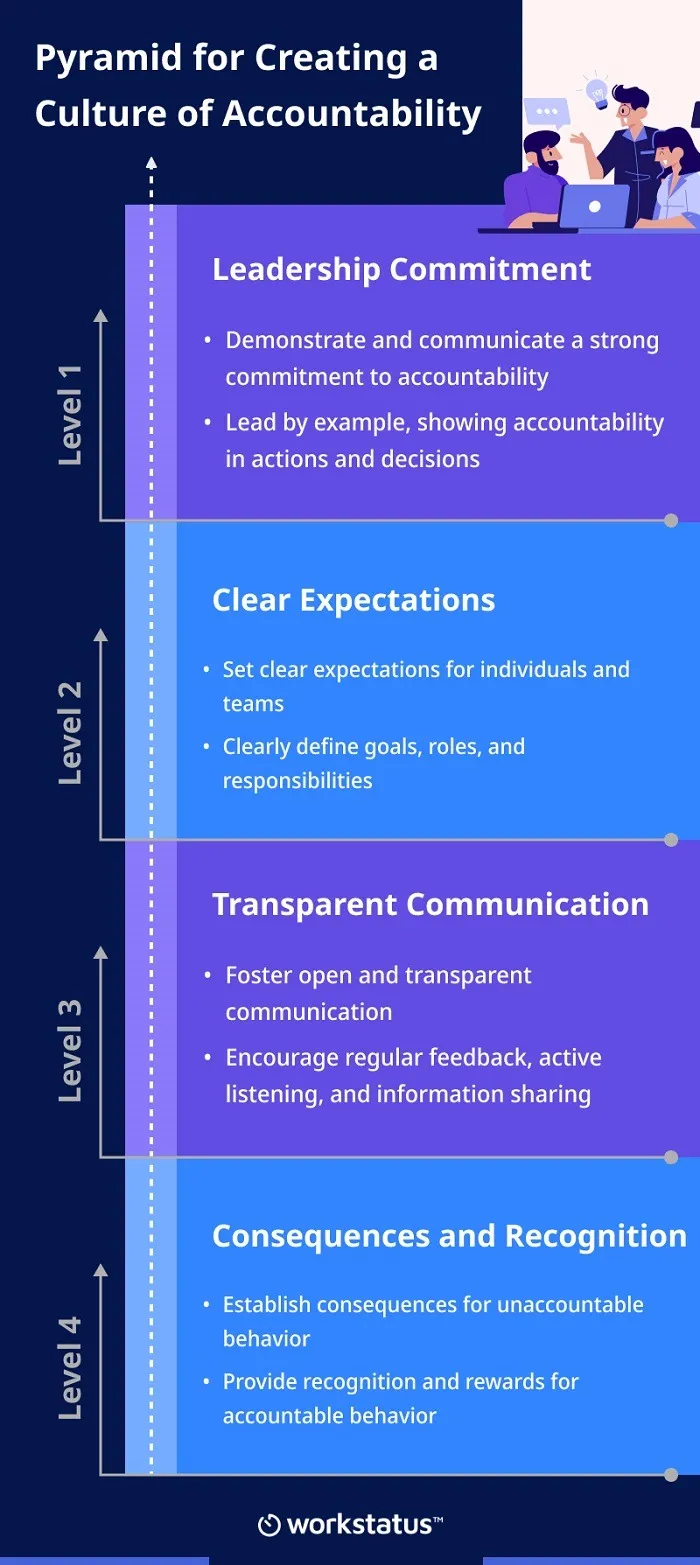
By focusing on each level of the pyramid, organizations can create an environment where accountability thrives, and drives success.
Ending Micromanagement With Workstatus
-
Real-Time Monitoring:
Workstatus lets managers have a live view of the activities and progress of their teams.
a. Provides a comprehensive overview: Get real-time visibility into the activities of team members to see who is working on what task or project at any given moment. It removes the need for constant check-ins or micromanagement.
b. Promotes autonomy and trust: By having access to real-time updates on tasks and progress, managers can trust their team members to manage their work independently. It reduces the need for constant supervision, fostering a culture of autonomy and empowering employees to take ownership of their responsibilities.
c. Facilitates effective resource allocation: Managers can quickly identify workload imbalances or bottlenecks. They can redistribute tasks or allocate additional resources as needed, ensuring optimal productivity without micromanaging individual team members.
What to look for:
- Active screenshots
- App & website monitoring
- Stealth mode
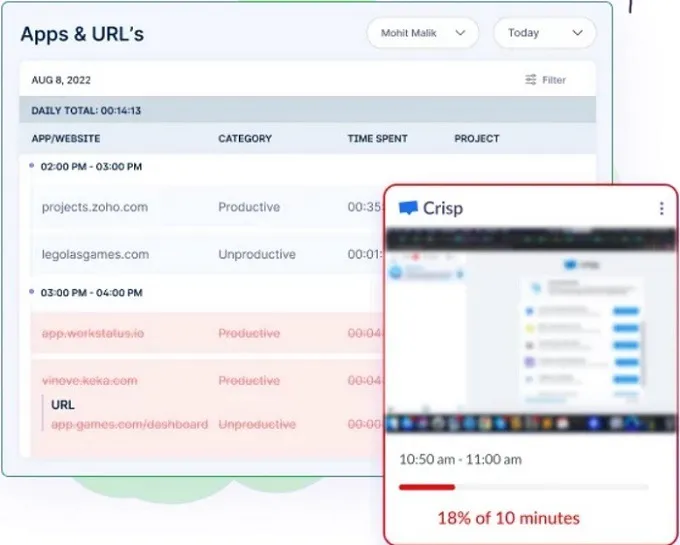
-
Tracking of Tasks and Projects
Workstatus has a tracking feature enables managers to assign tasks and projects to team members and track their progress.
a. Clear assignment and accountability: Assign tasks and projects to specific individuals while clearly defining responsibilities and expectations. It promotes a sense of ownership, reducing the need for micromanagement.
b. Progress visibility and updates:Team members can update the status of their tasks or projects, providing visibility into their progress. It eliminates constant check-ins or status meetings, as managers can access real-time updates anytime.
c. Streamlined collaboration:Workstatus enables seamless collaboration by providing a centralized task and project management platform. Team members can communicate, add time notes, and broadcast messages within the system, reducing the need for micromanagement through frequent interruptions or excessive email chains.
What to look for:
- Idle time tracker
- Activity tracker
- Time & activity reports
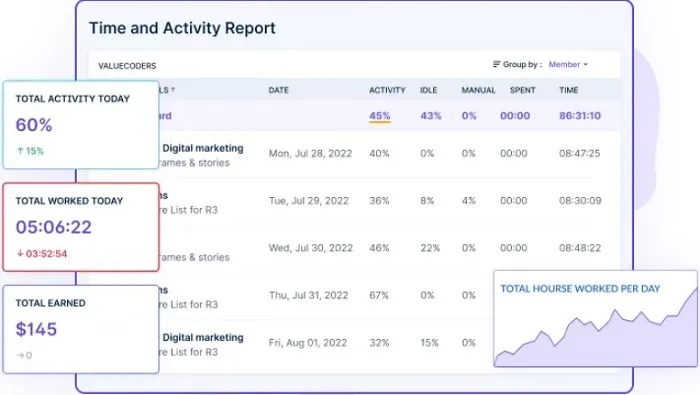
-
Absenteeism Tracking
Workstatus automates attendance tracking to eliminate the need for manual timekeeping or micromanagement techniques like closely monitoring absences or leaves.
a. Automatic clock-in and clock-out: Workstatus provides an automated system for employees to clock in and clock out, eliminating time thefts and manual errors in calculating payroll.
b. Time off Management: Employees can easily request and manage their leaves or absences digitally. It removes the need for micromanagement in tracking and approving time off requests.
c. Selfie Verification: Employees are required to take a selfie when clocking in or out, reducing the potential for buddy punching to promote accountability at the workplace.
What to look for:
- Automated timesheets
- GPS based tracking
- Web and Mobile apps
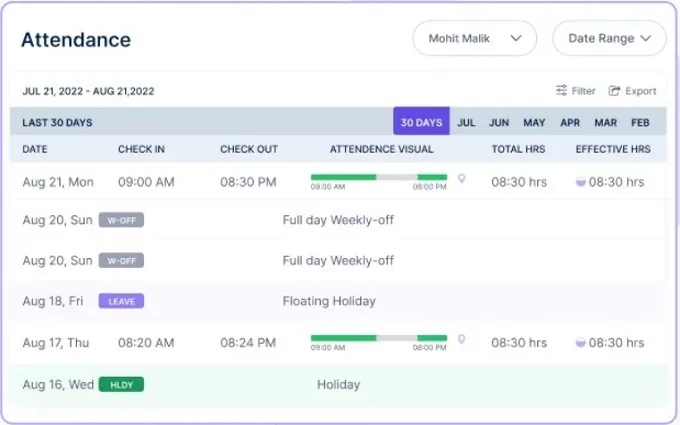
-
Transparent Reporting for Performance Evaluation
Workstatus provides managers with detailed insights into employee performance. These reports are based on tracked activities, progress, and other metrics, enabling objective performance evaluations.
a. Objective performance evaluation: Workstatus generates detailed reports to give you an objective basis for performance evaluation. It eliminates biases and reduces the need for subjective micromanagement practices.
b. Data-driven feedback: Managers can use the reporting feature to provide constructive feedback to employees based on real-time data. It allows for targeted discussions focused on improving performance and achieving goals rather than micromanaging every aspect of the work process.
c. Individual and team performance insights: Transparent reporting enables managers to assess individual and team performance. They can identify top performers, address performance gaps, and make informed decisions to optimize team dynamics without micromanaging each team member.
What to look for:
- Productivity graphs
- Automated performance reports
- Productive vs. unproductive time calculator
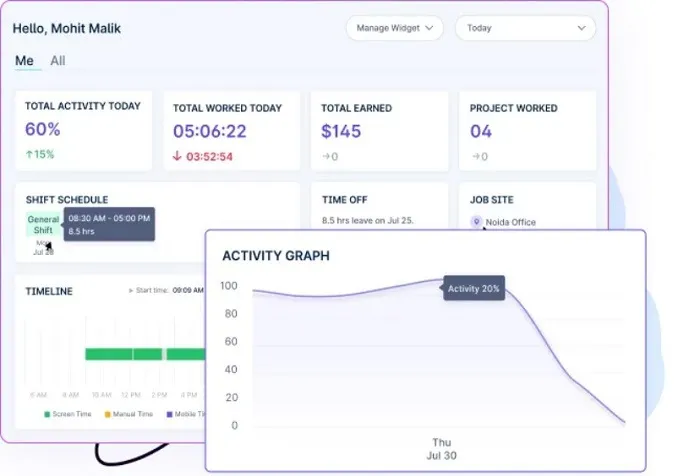
-
Automated Scheduling
Workstatus simplifies assigning work to team members based on their availability and workload.
a. Efficient resource allocation: Automated scheduling helps managers create, view and manage shifts of their teams to eliminate the need for constant intervention or micromanagement when planning schedules
b. Optimal time management: Scheduling lets managers plan and allocate time effectively, ensuring that tasks and projects are completed within deadlines. It reduces the need for micromanagement driven by time-related pressures or unnecessary follow-ups.
c. Reduced administrative burden: You can streamline the administrative aspects of task and project management. It frees up your time and energy, allowing you to focus on strategic decision-making and providing guidance rather than micromanaging day-to-day activities.
What to look for:
- Shift reminders
- Custome alerts
- AI dashboard
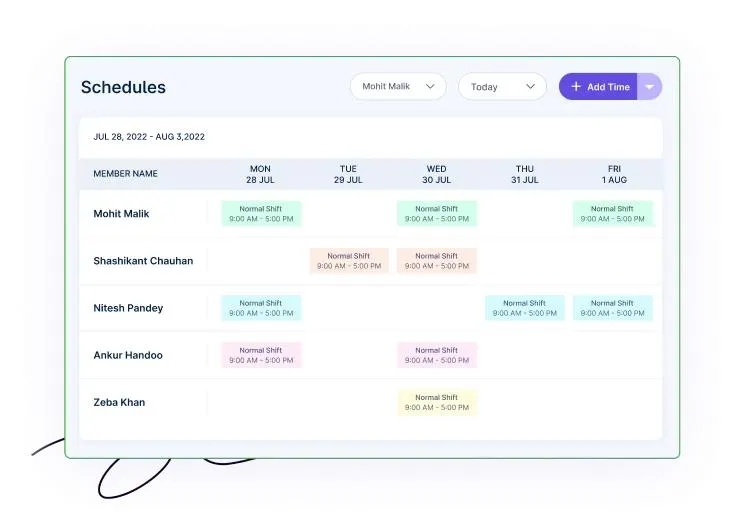
Overcoming Challenges of Accountability
-
Addressing Resistance to Accountability
It involves clear communication about expectations, fostering a culture of trust, and supporting employees.
By emphasizing the benefits of accountability and involving employees in goal-setting and decision-making processes, organizations can reduce resistance and encourage a more accountable work environment.
-
Handling Accountability Lapses
When accountability lapses occur, addressing them promptly and constructively is essential.
It involves open and honest conversations to understand the underlying reasons for the lapse, providing feedback, and setting clear expectations for future performance.
Also, additional training can help employees develop the skills and mindset necessary for greater accountability.
-
Nurturing a Learning and Growth Mindset
Cultivating a learning and growth mindset is crucial for fostering accountability.
It involves creating an environment where mistakes are seen as opportunities for learning and improvement rather than failures.
Encouraging ongoing feedback, providing professional development opportunities, and recognizing and celebrating progress can help employees embrace accountability for personal and professional growth.
90% of the employee don’t understand what their organization trying to accomplish to align with their work
Source: Anne Loehr
Closing Thoughts
Building a culture of accountability is a transformative journey that begins with an individual commitment and extends to the entire organization.
Embracing accountability fosters trust, innovation, and sustainable growth.
Start small, lead by example, and watch as a culture of accountability permeates every level, from micro to macro.
Incorporate Workstatus to position your organization for long-term success in today’s dynamic business landscape.
Workstatus empowers organizations to overcome micromanagement challenges and foster a culture of trust, autonomy, and productivity.
Start building a culture of accountability with Workstatus today!
FAQs
Ques. How can I encourage accountability among my team members?
Ans. Encouraging accountability starts with setting clear expectations, providing regular feedback, and fostering a culture of trust.
Ensure that responsibilities are well-defined, promote open communication, and recognize and reward responsible behavior for motivating your team.
Ques. What can I do if there is a lack of accountability in my organization?
Ans. Address the issue directly by having open and honest conversations.
Identify the root causes, provide guidance and support, and establish consequences for unaccountable behavior.
Implement processes and systems like Workstatus that promote transparency and track progress to encourage a sense of responsibility.
Ques. How can leadership contribute to building a culture of accountability?
Ans. Leadership plays a pivotal role in modeling accountability.
Leaders should lead by example, communicate expectations, provide resources and support, and hold themselves and others accountable.
By fostering a culture of accountability from the top down, leaders set the tone for the entire organization.












